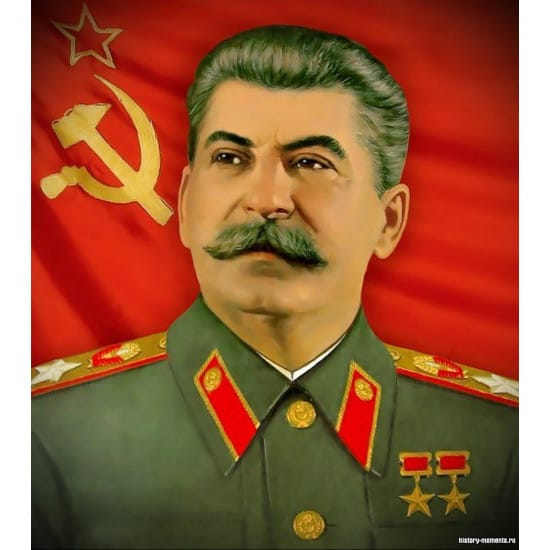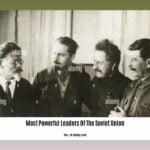Dive into the intriguing world of Soviet shoulder patches from the early years of Joseph Stalin’s rule. These patches weren’t just simple designs; they were symbols of power, ambition, and the transformation of a nation. Get ready to unravel the stories and meanings hidden within these fascinating emblems.
Did a “Young Stalin” Patch Exist?
The idea of a “young Stalin shoulder patch” is intriguing but likely a historical misconception. The term itself isn’t commonly found in historical records, which suggests it might be a more recent invention. To understand why, we need to travel back to Stalin’s early years and examine the context of Russian military insignia at the time.
Before the revolution, during Stalin’s formative years in the late 19th and early 20th centuries, the Russian army under Tsarist rule employed shoulder patches primarily to denote rank and unit affiliation—not to celebrate individual soldiers, especially those with revolutionary leanings like the young Stalin. He was far from a prominent figure then, still finding his place within the revolutionary movement.
Imagining a “Young Stalin” Patch
While a dedicated “young Stalin shoulder patch” probably didn’t exist, it offers a thought-provoking historical exercise. How might such a patch have looked if it had been created?
The Bolshevik Revolution was a turning point, and its symbols became deeply meaningful. The hammer and sickle, representing the workers and peasants, would likely have been prominent. The color red, synonymous with revolution, would have dominated. If Stalin’s image were to be featured—purely hypothetically, as no evidence supports this—it would likely have incorporated these powerful symbols.
The very absence of a “young Stalin” patch is telling. It begs the question: did the Soviets intentionally avoid creating such an emblem, aiming to downplay Stalin’s early years and control his image later on? Or perhaps, such a patch did exist, worn by a select few, and remains hidden away in an archive, waiting to be rediscovered.
While the mystery endures, exploring this possibility provides a captivating glimpse into Soviet history and the complexities of Stalin’s rise to power. It reminds us that history is told not only through what we find but also through the gaps and silences that ignite our curiosity.
What Makes WWII US Army Shoulder Patches So Collectible?
WWII US Army shoulder patches hold a special allure for collectors, acting as tangible connections to a pivotal moment in history. These aren’t just pieces of fabric; they’re woven with stories of bravery, camaraderie, and sacrifice, making them highly sought after.
Rarity plays a significant factor. Patches from small, specialized units with shorter lifespans, such as the “Ghost Divisions” created for deception, are far more elusive. The 14th Armored Division, for example, is a prime example; their patches are a rare find.
Then there’s the historical weight certain patches carry. The First Special Service Force, a joint US-Canadian commando unit known for daring raids, has a patch coveted by collectors. This emblem represents a specific kind of bravery and skill. Similarly, airborne units, especially those connected to specific operations like D-Day, hold a unique place in history, making their patches highly desirable.
Condition is key in the world of collecting, and patches are no different. A pristine patch, free from fading and damage, will command a higher value. Provenance, the patch’s backstory, adds another layer of value. A patch with a direct link to a particular soldier or unit, perhaps through letters or photographs, becomes even more special. It’s like holding a piece of that soldier’s story.
Ultimately, the collectibility of WWII US Army shoulder patches stems from their capacity to connect us to the past. Each patch represents a unique unit, its experiences, and the sacrifices made. This tangible link to history, combined with rarity, condition, and provenance, makes them more than just pieces of cloth—they become treasured artifacts.
How Can I Identify and Date My WWII US Army Shoulder Patches?
Identifying and dating WWII US Army shoulder patches is an exciting endeavor, akin to solving a historical puzzle. Each element—the colors, symbols, even the tiniest details— offers clues to its past.
1. Deconstruct the Design:
Start by carefully examining the design. Colors can provide initial hints. For instance, blue often signifies infantry units, while red frequently points to artillery. Symbols are equally important—eagles often represent airborne units, while crossed rifles typically indicate infantry. Every detail contributes to the patch’s story.
2. Uncover the Maker’s Marks:
Flip the patch over and look for markings. These manufacturer stamps offer valuable information. Researching these markings online or in reference books can help you pinpoint a production timeframe, further narrowing down the possibilities.
3. Trace the Design’s Evolution:
Importantly, patch designs weren’t static throughout the war; they evolved. Understanding these changes, like shifts in color palettes or the introduction of new symbols, can help you date your patch more accurately.
4. Consult the Experts:
Reference materials are invaluable tools in your detective work. Books and online resources dedicated to WWII patches can provide a wealth of information, including design variations, manufacturer details, and historical context.
5. Unearth the Stories:
Once you’ve identified your patch, delve into the story behind it. Research the associated unit, their battles, and their role in the war. By connecting the patch to the soldiers who wore it, you gain a deeper understanding and appreciation for its historical significance.
Remember, identifying and dating WWII patches is a journey of discovery. Keep an open mind, and enjoy the thrill of uncovering the hidden stories within these pieces of history.
What Are The Rarest WWII US Army Shoulder Patches? – And How Much Are They Worth?
The world of WWII US Army shoulder patches is filled with coveted treasures, some so rare they spark intense interest among collectors and command astonishing prices. Determining rarity often involves a convergence of factors.
Patches from units shrouded in secrecy, such as the “Ghost Divisions,” are highly sought after. These units, like the 14th Armored Division, were created to mislead enemy intelligence, making their patches as elusive as their missions.
Historical significance plays a crucial role in a patch’s value. Patches from the First Special Service Force, a joint US-Canadian commando unit, are prime examples. Their daring exploits and the unit’s legendary status contribute to the high value collectors place on these patches.
Airborne units, especially those involved in critical operations like D-Day, also hold significant value. The combination of inherent danger and historical importance makes their patches highly desirable. The closer a patch’s connection to a specific operation or event, the higher its value tends to be.
Beyond rarity and historical significance, condition is paramount. A pristine, untouched patch will be worth considerably more than a damaged one. Provenance, too, adds a layer of desirability; patches with a traceable history back to a specific soldier or unit command a premium.
For those new to collecting, start by researching reputable militaria dealers specializing in authentic US Army patches. Online forums and collector groups can offer valuable insights and help you avoid counterfeits. Reference books are essential tools for identifying patches, understanding their history, and gauging their potential value.
Remember, collecting is a journey of discovery. The thrill of the hunt, the joy of connecting with history, and the potential to own a piece of the past are what make collecting WWII US Army shoulder patches so rewarding.
Where Can I Buy and Sell Authentic WWII US Army Shoulder Patches?
Whether you’re a seasoned collector or just starting, navigating the world of buying and selling authentic WWII US Army shoulder patches requires knowing where to look and how to ensure authenticity.
Online Platforms:
- Online Marketplaces: Websites like eBay offer a vast selection, but it’s crucial to scrutinize seller ratings, item descriptions, and authenticity guarantees.
- Etsy: This platform often features vintage and handcrafted items, including reproduction patches. Look for sellers who prioritize historical accuracy.
- Specialty Militaria Websites: Dedicated militaria websites often have a curated selection and knowledgeable sellers who can answer your questions.
Offline Avenues:
- Military Antique Stores: These offer a chance to examine items closely and consult with knowledgeable owners.
- Flea Markets and Antique Shows: These can be great for finding hidden treasures, but be prepared to bargain and verify authenticity carefully.
- Auctions: Online and live militaria auctions can be exciting ways to buy and sell, but research thoroughly and set a budget beforehand.
Ensuring Authenticity:
- Materials and Manufacturing: Familiarize yourself with wartime manufacturing techniques and materials. Pay attention to details like thread type, backing material, and any markings or stamps.
- Red Flags: Be wary of overly bright colors, incorrect materials, or designs that seem out of place for the period. If a deal seems too good to be true, it probably is.
- Expert Opinions: When in doubt, seek an expert opinion. Reputable militaria authenticators can examine a patch and provide a professional assessment.
Embrace the Journey:
Collecting WWII US Army shoulder patches is about connecting with history and preserving the legacy of those who served. By researching, networking with fellow enthusiasts, and prioritizing authenticity, you can build a collection that is both personally meaningful and historically significant.
The History of US Army Shoulder Patches from WWI to Today
Those colorful emblems adorning the shoulders of US Army uniforms—shoulder patches—carry a rich history, tracing back to the earliest days of the American military and reflecting its evolution over time.
While some units experimented with simple designs during the Civil War, it wasn’t until World War I that shoulder patches became a standardized feature. Amidst the chaos of the modern battlefield, the need for quick and easy identification became paramount. In 1917, General John J. Pershing, leading the American Expeditionary Force, introduced the first official US Army shoulder patch—a black jack playing card, a nod to his penchant for carrying a deck.
World War II solidified the shoulder patch as a military tradition. Each division received its own unique design, often incorporating symbols, nicknames, or mottos that reflected their identity and achievements. From the 101st Airborne Division’s iconic “Screaming Eagle” to the 81st Infantry Division’s fierce “Wildcat,” these emblems became badges of honor, instantly recognizable on battlefields across Europe and the Pacific.
The years following WWII saw the US Army adapting to a changing world. New units were formed, specializations arose, and the Army’s mission evolved. These changes spurred the creation of new patch designs reflecting these shifts. Existing patches were sometimes updated to reflect a unit’s evolving role or structure.
Today, shoulder patches remain an integral part of the US Army uniform—a visual testament to unit history, values, and shared experiences. Each patch tells a story, a visual representation of heritage and the bonds forged in service. It’s a reminder that even a simple piece of cloth can carry profound meaning and evoke immense pride for those who wear it.












